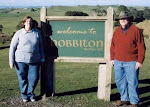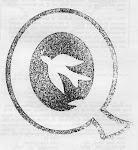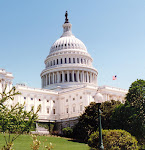
Apparel industry no longer a
good fit in El Paso
San Antonio Express-News (Texas)
October 15, 2005, Saturday
By Meena Thiruvengadam
EL PASO -- Inside two windowless buildings on El Paso Street, a remnant of this city's former glory is hanging by a thread.
"We try to hold on to as much as we can, but little by little I've had to give up some of mybusiness here and send it to Mexico in order to survive," said Alfred Fernandez, owner andfounder of AMERI-TECH Distributors, a company that makes jeans sold under designer andstore brand labels.
October 15, 2005, Saturday
By Meena Thiruvengadam
EL PASO -- Inside two windowless buildings on El Paso Street, a remnant of this city's former glory is hanging by a thread.
"We try to hold on to as much as we can, but little by little I've had to give up some of mybusiness here and send it to Mexico in order to survive," said Alfred Fernandez, owner andfounder of AMERI-TECH Distributors, a company that makes jeans sold under designer andstore brand labels.
El Paso was once considered the blue jeans capital of the world. In the 1980s, it cranked out anestimated 2 million pairs of America's favorite pants each week. But in the past decade,America's jeans manufacturing giants have moved elsewhere, and AMERI-TECH Distributorsis among only a handful of small-scale jeans makers that remain.On Oct. 7, VF Jeanswear, the maker of the Wrangler and Lee brands, became the last majorjeans manufacturer to leave the area. Laying off 395 workers, it shut down a manufacturingcenter in Fabens, 30 miles southeast of the city, and transferred the work to Costa Rica, whereit can be done more cheaply.
"Unfortunately, if you're going to be in the apparel business, you have a hard time producing inthe U.S.," said Sam Tucker, corporate vice president of human resources for VF Jeanswear."We held out for as long as we could." As recently as 1999, VF Jeanswear, with 4,500 workersat six area plants, was El Paso's largest private employer, a title once held by Levi Strauss &Co. Levi's had more than 4,600 employees working in its seven El Paso plants at its height.
At the time, Levi's also had 2,400 employees in San Antonio. But layoffs began in 1990, andby 2004 the company was no longer making jeans in San Antonio or anywhere else in thecountry.
"If you go into a mass merchant like Wal-Mart or Target, you can buy a pair of nice specialtyjeans for under $ 10," Tucker said. "In order to meet those prices, you can't make them here."
Today, nearly every one of the 450 million pairs of jeans sold in the United States is madeoutside its borders, with a single pair traveling through several countries as it's assembled forsale here. A pair of jeans that could be made for $ 6.67 in El Paso costs about $ 3 to make inCiudad Jurez, Mexico, and $ 1.50 in China.
Even China is facing competition from cheaper labor markets such as Indonesia and Russia."That is the problem with this type of manufacturing. It follows the low wages," said JesusCaas, an economic analyst with the Federal Reserve Bank of Dallas' El Paso branch.Tennessee, Mississippi, Alabama, North Carolina and even Mexico had thriving garmentmanufacturing sectors that have disappeared or are disappearing.
"You hope the economy outgrows those industries," said Lorenzo Reyes, interim CEO of
Upper Rio Grande at Work, an El Paso-area work force development commission. "But withus, layoffs were massive, and there was a lack of recognition that this was going to happen." Inthe 1970s, an estimated 40,000 people worked in El Paso blue jeans factories. By 1993, a yearbefore the North American Free Trade Agreement took effect, fewer than 24,000 El Pasoanswere working in all types of apparel manufacturing."As time progressed, NAFTA came into play and things really changed," Ameri-tech'sFernandez said. "All of our customers began going to Mexico for cheaper labor.The agreement erased limitations that once forced companies to manufacture at least part oftheir product in the United States and cleared the way for companies to send more of theirwork abroad to cheaper labor.
Today, fewer than 2,500 people work in all types of apparel manufacturing in El Paso,
according to the Texas Workforce Commission.
Many displaced workers, mostly Hispanic women between 35 and 55, received government aidor job retraining and English instruction, but program limitations, a lack of formal educationand language deficiencies have stunted their re-entry into the job market."The challenge is how to you find jobs for people who are unskilled and uneducated and onlyspeak Spanish," El Paso mayor John Cook said. "Unfortunately all the federal monies that weregiven to us for workforce training were squandered to teach people English instead of teachingthem job skills."
Even with a college degree and fluent English, moving from the blue jeans factories of El Pasoto other work is difficult.
Rosa Villa, who was laid off from a VF Jeanswear plant in El Paso in November, recently got abachelor's degree in business administration from the University of Phoenix.Nevertheless, "I haven't been able to find anything," she said. With her financial aid andunemployment benefits depleted, Villa is relying on the Women, Infants and Children programand food stamps to support herself and her three children.To make her electric payment, Rodriguez cut off her phone service last month, a moveparticularly heartbreaking to her teenaged daughter.
"I am very scared. I don't have any income," Villa said. "This month I was able to make mypayments, but next month I don't know what I'm going to do." Caas is sympathetic towardworkers such as Villa. Still, he insists El Paso overall is better off now than when apparelmanufacturing was a cornerstone of its economy.
Economists call it creative destruction. Apparel and textile factories are often the first factoriesin an area, and when they leave they free up resources for other, more advanced, higher-payingindustries to move in, Caas said."In the end, we the consumers benefit because we can go to Wal-Mart, Kmart or Target and get
things like a nice pair of shoes for $ 9.99, and we have more money to enjoy our lives," hesaid.
Although El Paso has lost 22,000 manufacturing jobs in the past decade, it has gained 48,000jobs in the service sector, Caas said.
Overall, the city now has about 25,000 more jobs than it did in 1995, and in August, El Paso
enjoyed higher job growth than any other city in the state.
"On average, these new jobs pay 30 to 40 percent more than jobs in apparel factories," Caas
said. "This is part of the natural evolution of economies." Expensive designer jeans have
helped AMERI-TECH Distributors survive that evolution.
The company has moved most of its blue jeans production to Torren, Mexico, but continues toproduce high-end jeans and pajamas in El Paso, also its distribution and administrationheadquarters.Torren has been a hub for blue jeans manufacturers for years, but before NAFTA, most of itsjeans stayed in Mexico. Now, AMERI-TECH's plant there produces more than 100 times as
many pairs of jeans per week for sale in the United States as its El Paso plant makes."You have to go along with change," Fernandez said. "Globalization is inevitable."
Incorporating premium fabrics and labor-intensive designs, the jeans Ameri-tech makes in ElPaso sell for $ 200 to $ 600 a pair, far more than Fernandez is willing to pay for a pair. But thisis one area in which his company has an edge over foreign manufacturers.Mexico, Central America and Asia may offer lower production costs, but the savings come atthe price of longer travel times that can keep companies from keeping pace with America'srapidly changing fashion tastes.The countries also can't produce jeans with the now rare "Made in the USA" label. "There's abig push from companies for the Made in the USA label," Fernandez said. "For some
companies it's a real selling point, but to give it to them, we have to do everything here." Andas long as that demand is there, 100 to 130 AMERI-TECH workers will continue cutting,sewing and adding finishing touches to America's favorite pants in what was once the bluejeans capital of the world.



























































